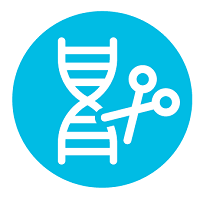Advances in Discovery, Formulation, and Delivery of New Modalities
Rapid Fire: Drug Delivery for New Modalities and Therapies
Molecular Investigation on Permeation-Enhancer Assisted Oral Peptide Delivery in Lipid-Bilayers
Wednesday, May 15, 2024
3:15 PM - 3:30 PM PT
Location: Yosemite BC

Jing Ling, PhD
Associate Principal Scientist
Merck
South San Francisco, Pennsylvania
Rapid Fire Speaker(s)
In this study, we aim to utilize solid-state NMR to probe the structures and dynamics of two representative and relevant permeation enhancers of sodium caprate (C10) and sodium salcaprozate (SNAC) with the hydrated lipid bilayer. Our results indicated that both PEs effectively enhance lipid mobility, facilitating peptide permeation. Interestingly, the orientation, distribution, and insertion depth of PE within the bilayers are critical factors impacting the membrane dynamics and the concurrent peptide permeation, which agree well with a few essential findings of previous modeling studies. Briefly, caprate appears to “soften” the membrane by increasing fluidity and generally results in increased dynamics of DMPC headgroups in the bilayer more significantly than SNAC. In contrast, the salicylamide region of SNAC increases more dynamics of the acyl chains in the transmembrane region due to the bulky effect and horizontal molecular orientation. Co-existing and competing equilibriums of monomer-to-micelle, PE-peptide, and PE-lipid interactions play a mechanistic role in modulating the impact of PE on the dynamics and curvature of the lipid bilayer. These molecular understandings are valuable and helpful in gaining insights relevant to the design of PE-assisted peptide delivery. The study also builds an experimental protocol, by utilizing in-house high-resolution spectroscopic tools, for data-driven decisions on the formulation composition for oral peptide drug products.
Learning Objectives:
- Upon completion, participants will be able to overview the current efforts on drug delivery and formulation development for oral peptide delivery
- Upon completion, participants will be able to understand advanced experimental biophysical and biochemical characterization for permeation enhancer and lipid membranes
- Upon completion, participants will be able to understand the molecular mechanism in permeation enhancer induced membrane permeability.

